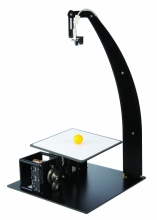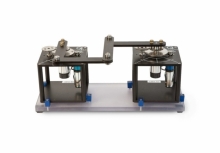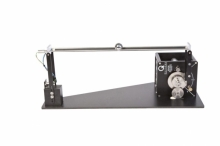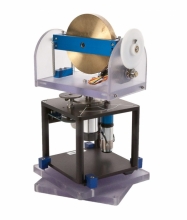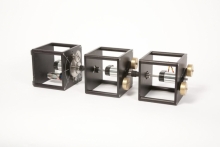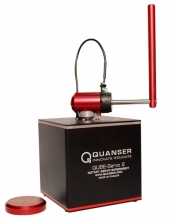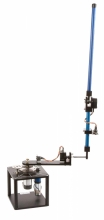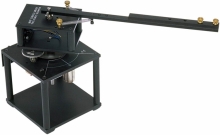The Quanser 2 DOF Ball Balancer module is a vision-based control experiment designed to teach intermediate to advanced control concepts and to demonstrate real-world control challenges.
Rotary Motion Platform
As a provider of engineering controls education, you may face several challenges. They could include attracting the best students, ensuring students graduate with industry-ready skills, meeting the curriculum’s goals while still finding enough time for research, and last but not least, sourcing reliable lab equipment and educational tools while staying within budget.
-
-
Item Number:782474-01
The 2 DOF Inverted Pendulum/Gantry module is ideal to introduce more advanced principles of robotics. You can use it to demonstrate real-world control challenges encountered in aerospace engineering applications, such as rocket stabilization during takeoff.
-
The 2 DOF Robot module is ideal to introduce students to the fundamental and intermediate principles of robotics. You can use it to demonstrate real-world control challenges, such as pick-and-place robots used in manufacturing lines.
-
The Ball and Beam module is ideal to introduce various control concepts related to unstable closed loop systems. You can use it to demonstrate real-world control challenges such as aircraft roll control. The module attaches to the Rotary Servo Base Unit.
-
Introduce rotational dynamics concepts.
-
Multi-dimensional system for torsional dynamics.
-
The Quanser QUBE™-Servo 2 is a fully integrated, modular servomotor lab experiment designed for teaching mechatronics and control concepts at the undergraduate level.
-
The Rotary Double Inverted Pendulum module is ideal to introduce intermediate and advanced control concepts, taking the classic single inverted pendulum challenge to the next level of complexity. You can use it to demonstrate real-world control challenges related, for example, to takeoff stabilization of a multi-stage rocket. The Rotary Double Inverted Pendulum module attaches to the Rotary Servo Base Unit.
-
The Rotary Flexible Joint module is ideal for modeling a flexible joint on a robot when mounted on the Rotary Servo Base Unit. It is also useful in the study of vibration analysis and resonance. This experiment uses a sensor to measure joint deflection, to address the control problems encountered in large, geared robot joints where flexibility is exhibited in the gearbox. Students will learn how to model the system using state-space and design a feedback controller with pole-placement.
-
The Rotary Flexible Link module is designed to help students perform flexible link control experiments. The module is designed to be mounted on the Rotary Servo Base Unit. This experiment is ideal for the study of vibration analysis and resonance and allows us to mimic real-life control problems encountered in large, lightweight structures that exhibit flexibilities and require feedback control for improved performance. The experiment is also useful when modeling a flexible link on a robot or spacecraft.

